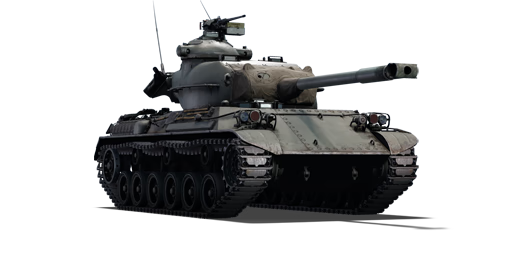The Type 61 was the first Japanese service MBT of the JGSDF, developed on the ST-A series of prototypes to replace the ageing M4A3 (76) and M24 which on top of their age were too large for the average-sized Japanese crew member. While most of the components of the Type 61 were of American origin, the design and role of the tank were purely Japanese. While the tank was a serviceable Japanese equivalent of the M26 Pershing and Patton (M46/47/48) series, it was only introduced in 1961 with production only catching up in 1970, it started to show its age compared to the newer generation of tanks like the M60, T-62, and Leopard 1. The Type 61 remained in service until 2000 when it was finally completely replaced by the Type 74 MBT and the roll-in phase of the Type 90 MBT.
The Type 61 was introduced along with the initial Japanese Ground Forces tree in Update 1.65 "Way of the Samurai". It looks like a bizarre cross between the American M41 Walker Bulldog and Patton series (M46/47/48). It is very similar in its overall length and size to the M41 and the turret looks like the M60's with the same prominent commander's cupola on top of the turret housing a rangefinder. The Japanese Type 61 mimics the American M47 Patton in firepower and M41 Walker Bulldog in armour, it has the large, tall profile and fairly mobile medium tank characteristics of the M47 Patton, with the same decent 90 mm M36 (Type 61) cannon, but the armour protection qualities are more akin to those of the M41 Walker Bulldog.















